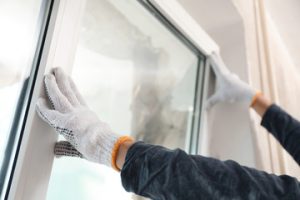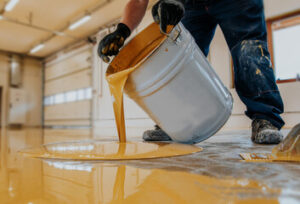Home » Home Improvement
Category Archives: Home Improvement
How to Do Window Installation Correctly
To ensure the window seals properly and operates smoothly, spray a thin layer of minimally expanding foam into the sash-weight pockets in the side jambs. It also fills any gaps less than 1/4 inch wide with elastomeric caulk.
It’s important to keep children and pets away from the work area during Window Installation Waukesha to prevent accidents. This step is also an opportunity to cover furniture in the room that may be exposed to dust and debris.
1. Clear the Area

Window installation is a project that requires ample space to do it correctly. It can cause dust and debris to spread throughout the house, so it’s important to clear the area. You’ll want to move any furniture away from the windows, and consider taking down wall art or other decorations.
Window tracks and sills can get packed on with grit, making them difficult to clean. Use a vacuum cleaner attachment with a crevice tool to remove any loose dirt. For caked on dirt, make a paste of water and a mineral deposit removing cleaner with oxalic acid (such as CLR or Zud). Apply the paste to the area and rub it in gently.
Installers will use a slow-expanding spray foam fill to add insulation around the window opening. This will double insulate the area and prevent moisture infiltration.
2. Measure the Window
Before ordering any new windows, you’ll need to measure your existing window frame. This will give you a baseline measurement that you can use to find windows that will fit. You should also subtract a small amount from both the height and width measurements to account for shimming and insulation.
To find the width, extend your tape measure horizontally across the frame in three places. Take the smallest measurement as your window width.
For the height, extend your tape measure from the head jamb (the top vertical piece of trim) to the sill. Measure in the left, middle and right corners of the frame and choose the shortest measurement as your window opening height.
3. Remove the Old Windows
You’ve probably heard the adage “measure twice, cut once”. This same principle applies to window installation. Correct measurements ensure that the new windows fit properly, reduces potential energy loss, and minimizes moisture infiltration.
Skilled installers will carefully remove the old windows, preserving materials that can be reused. They will also inspect the exterior stop moulding, if applicable, to ensure it is intact and not damaged.
The old windows are removed section by section, so the new ones can be put in right away. This helps keep the crew on schedule and ensures that your house will always have a working window in place. This will increase your home’s security and help you save money on your energy bills. It will also improve your home’s comfort and curb appeal.
4. Measure the New Window
It’s critical to accurately measure the size of the new window. A tiny mistake can throw off the entire installation and leave you with ill-fitting replacement windows.
To determine the window height, make three vertical measurements. First, from the sill to the head jamb on the left side, then in the center and finally on the right. Take the smallest of these numbers and use it as your window opening height.
Repeat this process to get the width and depth of the frame. Be sure to include the trim when taking these measurements. Some installers will also need to add casing or brickmould, which wraps around the exterior of the window to provide a finished look. This can increase the cost of the project, so it’s best to discuss this with your installer before starting. Whenever possible, have two people take the measurements so that they can compare them and record them at the same time.
5. Cut the Frame
Incorrect framing can lead to water infiltration, poor window operation and alignment, and energy loss. Framing carefully and double-checking measurements is important for a successful window installation.
It’s best to frame the window opening before installing drywall to prevent damage and ensure a tight, strong fit. Be sure to use rot-resistant materials, such as OSB or plywood.
The sill of a new window can be sloped by cutting the top of the cripple studs at an angle. This allows you to reduce the height of the sill without compromising load requirements or weakening the header. However, it is important to note that this will reduce insulation space. Be sure to consult a professional when making this adjustment.
6. Install the Window
Once the new window is positioned in the opening, installers use shims to keep it level and plumb. This is an important step because improperly installed windows can lead to leaks and energy loss.
Then, a bead of caulk is applied around the window frame to create an airtight seal. If needed, foam insulation can be added to the exterior stop molding (also known as blind stop) for an additional seal.
Canvas runners and tarps are set up throughout your home to protect your furniture, and children and pets are kept away from the work area for safety. This also helps the crew avoid unnecessary distractions while working on your windows. This is a great way to ensure a seamless installation process.
7. Apply the Caulk
Applying caulk around your window provides a finishing touch to the installation and creates a seal against air and water. Properly applied caulk also protects your home from energy loss.
Before applying the caulk, thoroughly clean the area around the window. Scrape off old caulk with a putty knife and remove any loose or damaged areas. Dampen the area lightly with a sponge or cloth, and allow it to dry completely.
Choose a caulk suitable for the application and climate conditions. Exterior caulking must be able to withstand weather changes, while interior-side windows require a mold-resistant caulk. Using a utility knife, cut the applicator tip on the caulk tube at a 45 degree angle. This allows for better precision when applying the caulk. Start at one corner and apply a bead of caulk along the seam, working from corner to corner.
8. Install the Hardware
Once the window is in place, the installers will install the hardware. This includes the handle, locks, and latches. It’s important that the handles are properly installed to ensure a smooth, bind-free operation. The installers will also inspect the frame and sill for dents, scratches, or any other damage.
In addition, they will make sure that the new window is positioned correctly in the opening. This step is very important because it helps prevent thermal transfer and energy loss.
It is recommended that you remove any curtains or window treatments from the windows during this time. This will allow the installers to work more easily and quickly. It’s also a good idea to move any furniture away from the area to protect it from dust or debris. This may seem obvious, but it’s very important! This is especially true if you have small children or pets.
9. Install the Weather Seal
It’s always a good idea to follow the old adage “measure twice, cut once.” This is especially important if you’re having new windows installed, which are usually built into an existing frame and are incorporated into the house’s existing weather barrier.
New window installation is typically done during the construction of a new home or as part of significant renovation or addition project. It may involve modifying an existing opening in the wall, installing support framing and interior trim casing, flashing the window, and caulking.
Installers use a slow-expanding spray foam fill to seal the gaps around the frame and sill. This double-insulates the window and provides a watertight seal to prevent air and moisture leakage. Vinyl V strips are often used in this application. They’re inexpensive, easy to work with, and nearly invisible when installed properly.
10. Clean the Window
Once the window is in place, it needs to be cleaned to remove any residue from the caulk. The installers will use a sponge or a clean, dry cloth to wipe the window surface. Paper towels should be avoided, as they leave lint films on the windows.
They will also apply a second coat of caulk to the outside of the new window frame to seal it against moisture infiltration and cold air infiltration. This is a critical step, and using the highest-quality caulk that resists shrinking in the elements will ensure a long-lasting finish. A good caulk will also help minimize energy bills and make your home more comfortable.
